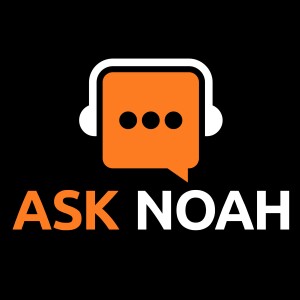
Episode 231: Networking Part 2 with Steve Ovens
 2021-05-12
2021-05-12
Download
Right click and do "save link as"
In this episode Steve joins us again to discuss networking. Building on the knowledge from our last episode we dig further into ipv6 and other network technology!
-- During The Show --
01:00 - VLAN question - Scott
Management VLan is for admin not printers etc
Set the switch to only allow access on the management VLan
Use firewall rules to allow or deny cross VLan access
08:10 - Replace Unify with TP Link Omada? - Charlie
Checking it out, will get back to you
09:00 - Just FYI problem accessing Wireguard tutorial - Paul
New Wireguard Tutorial (http://ost.altspd.com/kb/faq.php?id=201)
09:30 - What Router Should I buy? - Nik
Netgate SG-1100 (https://shop.netgate.com/products/1100-pfsense)
12:15 IPv4
Broadcast traffic - sends a packet to everyone, not forwarded by routers
Broadcast Domain - Any computer that can hear a broadcast packet
ARP Table - Table that matches switch port to mac address
Computers also keep ARP Tables - Including Host Name, MAC Address, IP Address
Rebooting a switch will cause it to rebuild the ARP Table
Private IP Addresses - IPv4 Addresses set aside for internal networks
RFC 1918 (https://datatracker.ietf.org/doc/html/rfc1918)
NAT - Network Address Translation - Public IP Private IP
IP Chicken (ipchicken.com)
Router typically hands out DNS Server+IP Address+Hostname
30:00 IPv6
IPv6 packet types
Anycast
Multicast
Link-Local
IPv6 Anycast - Send out a packet to an IP address, expecting multiple devices to have the same IP Address but only the closest responds
IPv6 Multicast - Tries to only hit intended IP addresses
Link-Local - Automatically assigned, non route-able, Required for IPv6
Unique-Local - Private or Public route-able IP address
Host bit of IPv6 identifies your device across networks
41:50 Reading IPv6
First hextet = IANA Assigned prefix
Second hextet = Your Geographical region
Third hextet = Your ISP
Fourth hextet = Your Network
Leading zeros can be omitted
This IP:
FE80:0ED1:0098:000A:0000:0000:0AED
Can be expressed like this:
FE80:ED1:98:A::AED
IPv6 Loopback address
::0
48:00 Getting an address
Computer sends an icmpv6 packet called a Router Solicitation
The router responds with its information (with its Link Local address)
Either the router generates an ipv6 based on the requesting computers MAC address OR the computer chooses its own IP address
The computer sends a Neighbor Solicitation packet which is basically the computer attempting to ping a device on the network with its IP address to see if its chosen IP already exists
IPv6 you are on the internet by default unlike IPv4 in most setups
"Host" bits are based on your MAC address, which can be used for finger printing/tracking
Addressing
Address broken into hextets
https://i.imgur.com/9dZgNxD.png
-- The Extra Credit Section --
For links to the articles and material referenced in this week's episode check out this week's page from our podcast dashboard!
This Episode's Podcast Dashboard (http://podcast.asknoahshow.com/230)
Phone Systems for Ask Noah provided by Voxtelesys (http://www.voxtelesys.com/asknoah)
Join us in our dedicated chatroom #GeekLab:linuxdelta.com on Matrix (https://element.linuxdelta.com/#/room/#geeklab:linuxdelta.com)
-- Stay In Touch --
Find all the resources for this show on the Ask Noah Dashboard
Ask Noah Dashboard (http://www.asknoahshow.com)
Need more help than a radio show can offer? Altispeed provides commercial IT services and they’re excited to offer you a great deal for listening to the Ask Noah Show. Call today and ask about the discount for listeners of the Ask Noah Show!
Altispeed Technologies (http://www.altispeed.com/)
Contact Noah
live [at] asknoahshow.com
-- Twitter --
Noah - Kernellinux (https://twitter.com/kernellinux)
Ask Noah Show (https://twitter.com/asknoahshow)
Altispeed Technologies (https://twitter.com/altispeed)
Special Guest: Steve Ovens.
view more
More Episodes
Episode 412: Ask Noah Show 412
 2024-10-23
2024-10-23
 2024-10-23
2024-10-23
Ask Noah Show 411
 2024-10-16
2024-10-16
 2024-10-16
2024-10-16
Ask Noah Show 410
 2024-10-09
2024-10-09
 2024-10-09
2024-10-09
Episode 409: Ask Noah Show 409
 2024-10-02
2024-10-02
 2024-10-02
2024-10-02
Ask Noah Show 408 | Distro Hopping
 2024-09-25
2024-09-25
 2024-09-25
2024-09-25
Ask Noah Show 407
 2024-09-18
2024-09-18
 2024-09-18
2024-09-18
Ask Noah Show 406
 2024-09-04
2024-09-04
 2024-09-04
2024-09-04
Ask Noah Show 405 | Method Not Allowed
 2024-08-28
2024-08-28
 2024-08-28
2024-08-28
Ask Noah Show 404
 2024-08-21
2024-08-21
 2024-08-21
2024-08-21
Ask Noah Show 402
 2024-08-07
2024-08-07
 2024-08-07
2024-08-07
Ask Noah Show 401
 2024-07-31
2024-07-31
 2024-07-31
2024-07-31
Ask Noah Show 399
 2024-07-17
2024-07-17
 2024-07-17
2024-07-17
Ask Noah Show 397 - Own it if You Can!
 2024-07-03
2024-07-03
 2024-07-03
2024-07-03
Ask Noah Show 396
 2024-06-26
2024-06-26
 2024-06-26
2024-06-26
Ask Noah Show 395
 2024-06-19
2024-06-19
 2024-06-19
2024-06-19
Ask Noah Show 394
 2024-06-12
2024-06-12
 2024-06-12
2024-06-12
012345678910111213141516171819
Create your
podcast in
minutes
- Full-featured podcast site
- Unlimited storage and bandwidth
- Comprehensive podcast stats
- Distribute to Apple Podcasts, Spotify, and more
- Make money with your podcast
It is Free
- Privacy Policy
- Cookie Policy
- Terms of Use
- Consent Preferences
- Copyright © 2015-2024 Podbean.com




